PLEASE NOTE: The information in this blog is for educational purposes only. It is not a substitute for professional medical advice. Consult your healthcare provider if you’re seeking medical advice, diagnoses, or treatment.
Colostrum has taken the health world by storm.
Grass fed colostrum powder, supplements, yogurts, and more are constantly finding their way into health stores and as a topic of conversation among influencers like Joe Rogan, Paul Saladino and Dave Asprey.
Let’s find out what all the hype is about.
This article will walk you through the ins and outs of grass fed colostrum, how it impacts your body, and what to look for when spending your hard earned money.
What is Colostrum?
During the final days of pregnancy and early days of postpartum, colostrum is produced by the mother cow (1). As a rich source of protein, carbs, fat, vitamins, and minerals, it is crucial for the growth and survival of a newborn calf (2, 3).
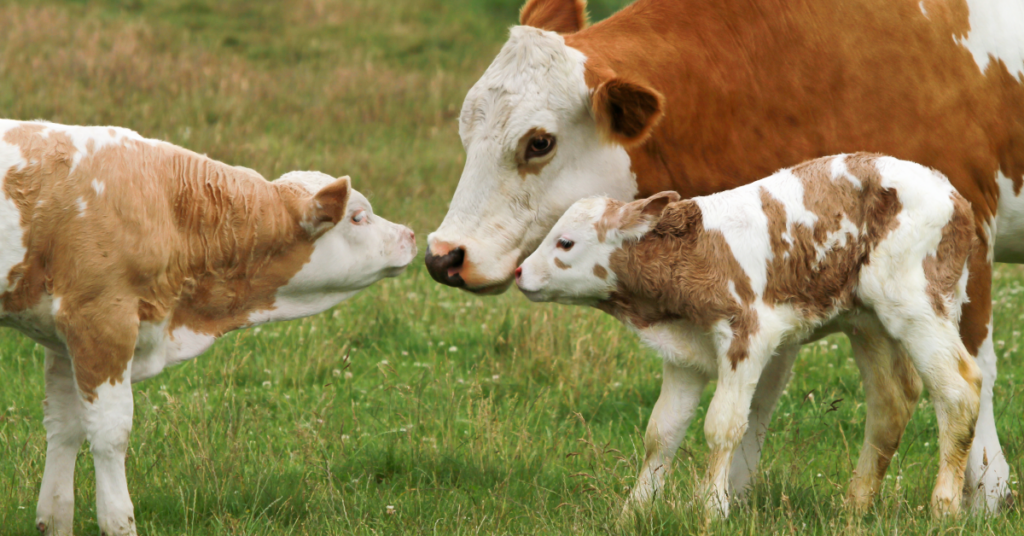
Grass fed colostrum simply comes from cattle who spend their entire lives foraging and consuming grass.
While humans also produce colostrum, it just so happens that colostrum from cows is 100-1000 times more powerful than human colostrum and can be immensely beneficial for humans and other animals (4).
For centuries, humans have used colostrum as a food or for medicinal reasons because it contributes to health throughout life (5). Before the discovery of antibiotics and penicillin, colostrum was even used as an antiviral (6).
Today, it’s popular for its beneficial impact on gut health, the immune system, athletic performance, and weight management.
Colostrum is LOADED With Nutrients
Colostrum is produced at a critical point for infants, so it shouldn’t be surprising that it’s jam-packed with essential nutrients.
Like other forms of dairy, colostrum is an important source of vitamins A, B, C, D, E, and K (7, 8, 9).
Grass-fed colostrum is also filled with high amounts of minerals used for immunity and other key functions (10). In particular, colostrum is rich in magnesium, selenium, zinc, iron, phosphorous, calcium, and copper (11, 12).
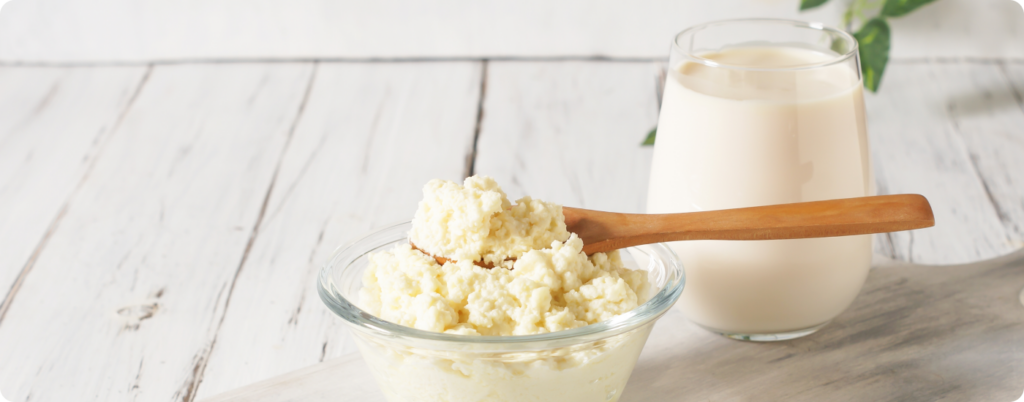
One of the most attractive components of colostrum is lactoferrin. This powerful protein has anti-cancer, anti-bacterial, antioxidant, and anti-inflammatory properties (13, 14). Lactoferrin can protect against oxidative stress and infection, support tissue development, and help with fertility (15, 16).
Lactoferrin is found throughout the human body anywhere quick protection is needed for external threats (17, 18).
Other main components found in colostrum include:
- Gangliosides, critical for brain function and development, are present in colostrum and other milk products (21).
- Exosomes are found in milk, blood, and saliva and assist with cellular communication and bone growth (22, 23).
- Immunoglobulins (also known as antibodies) help fend off bacteria, viruses, and other pathogens (24, 25).
The nutrient density in colostrum is tough to match, and its benefits extend throughout the body.
8 Benefits of Grass Fed Colostrum
Given its nutrient density, the benefits of grass fed colostrum are amazing. In particular, these eight areas can benefit from this valuable food:
#1 Gut Health

- Colostrum can help protect against leaky gut syndrome and gut pathogens (such as fungus and bacteria) (26, 27)
- Colostrum can help repair or maintain permeability and gastrointestinal integrity (28, 29)
- IBD and infectious diarrhea can be improved by colostrum (30, 31, 32)
- Colostrum may help treat gut infections such as helicobacter pylori (H pylori)(33)
- Natural growth stimulators in colostrum can help boost nutrient absorption (34)
#2 Heart Health
- With potential positive effects on triglycerides, blood glucose, and other markers, colostrum is emerging as a tool for improved heart health (35)
- Leptin, found in colostrum, can help with repair and functioning of the heart (36)
#3 Exercise Performance & Recovery

- Colostrum supplements can lead to improvements in muscle power (37)
- When paired with strength training, colostrum can result in greater gains in strength, muscle mass, and reduction of body fat (38)
- Thanks to its IGF-1 content, colostrum can increase exercise duration (39)
- Colostrum can help repair skeletal muscle (40)
- A study on older adults showed that adding colostrum alongside resistance training can increase leg press strength (41)
- Long-term use of colostrum can reduce inflammation for athletes (42)
- Colostrum can protect athletes from upper respiratory infections (43)
- A study on soccer players found that a low dose of colostrum can help maintain performance and reduce muscle damage from exercise (44)
#4 Skin Health
- The combination of honey and colostrum can enhance wound healing (45, 46)
- Growth factors in colostrum can promote wound healing and growth of skin cells (47)
- Colostrum can help treat severe burns (48)
#5 Immune Function

- Lactoferrin, found in colostrum, has antiviral, anti-inflammatory, and antibacterial properties (49)
- Lactoferrin can also help regulate the immune system (50)
- Compared to placebo, supplementation with colostrum has been shown to improve lung function and dramatically improve nasal allergy symptoms (51)
- One study showed that colostrum was at least 3X more effective than vaccinations at preventing the flu (52)
- The vitamins and minerals present in colostrum can help immunity (53)
#6 Bone Health
- Various studies have shown that colostrum is useful for bone health (54)
#7 Diabetes
#8 Brain Health
- Gangliosides, found in colostrum, play a crucial role in brain development and neuronal function (57)
Modern science is finally beginning to unpack why this food has been treasured for thousands of years.
Colostrum vs Milk: What’s the Difference?
Colostrum is a form of milk with a variety of important differences compared to a typical milk found in the grocery store (58, 59, 60, 61, 62).
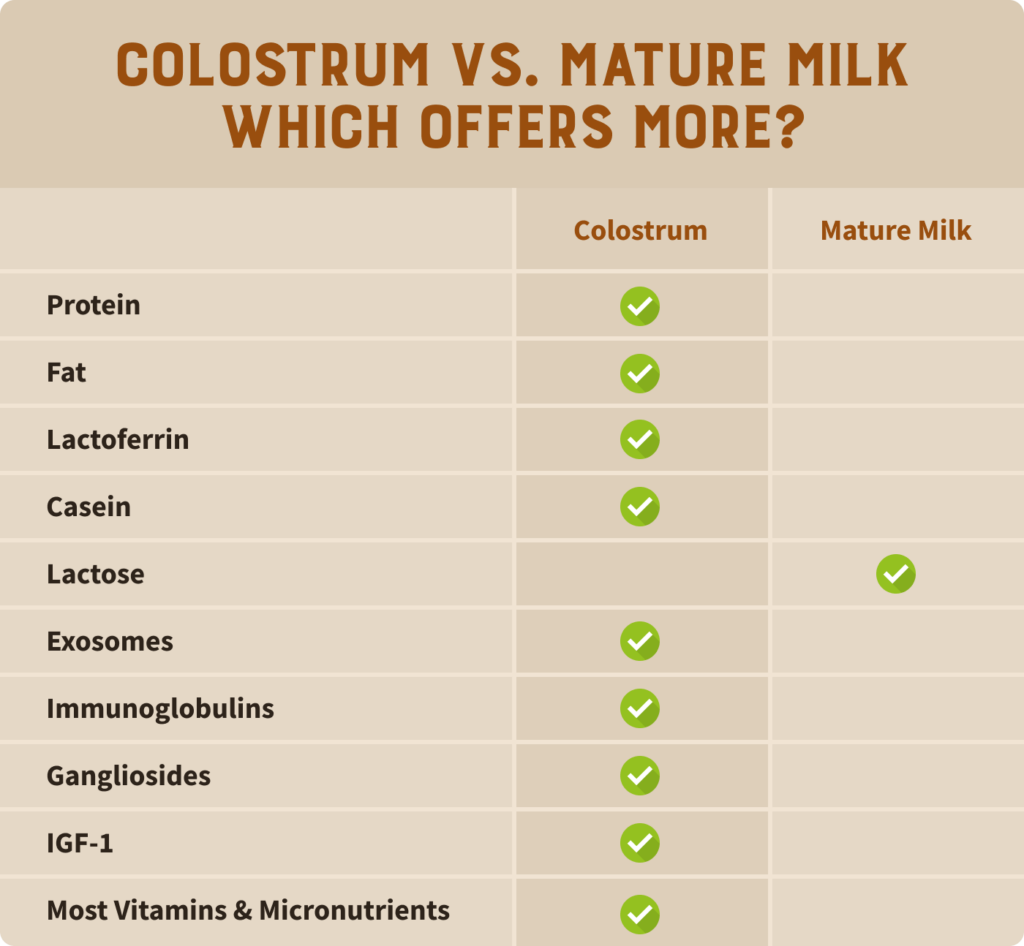
Colostrum can even contain 5 times more protein, twice as much fat, and up to 7 times more lactoferrin!
Let’s talk about lactose intolerance…
Lactose is a form of carbohydrate in milk that about 20% of the US population is intolerant to (63). Given the lower lactose content, colostrum is a popular alternative to mature milk for those with lactose intolerance (64).
Despite the benefits, those with allergies to milk should still steer clear of colostrum (65).
What to Look For When Buying Colostrum
Not all colostrum products are created equal. Preparation methods can have a major impact on the quality of the finished product.
While you may be able to buy colostrum from a local farm, colostrum is typically frozen and shipped to a processing facility, where it undergoes pasteurization and fat removal, followed by freeze or spray drying (66). Both freeze and spray drying can increase shelf life and minimize losses of the bioactive components in colostrum (67).
The heat from pasteurization can kill potentially harmful contaminants, but at the same time, it reduces beneficial components such as lactoferrin and IGF-1 (68, 69). So, finding a product that uses low temperatures is crucial (70).
Colostrum quality can also be impacted by a wide variety of factors such as genetics, breed, age, elevation, humidity, diet, herd health, and seasonality (71). Pollutants from a cow’s environment (such as heavy metals) can also find their way into colostrum (72).
We know that meat from grass fed cows can be more nutritious compared to cattle mainly fed grains (73, 74). So, grass fed colostrum may result in a higher quality product. Here’s what to look for when buying colostrum.
- Look for grass-fed & finished colostrum.
- Look for companies that conduct and share testing for contaminants.
- Look for colostrum processed with low temperatures to preserve nutrients.
Grass-fed Colostrum from Heart & Soil checks these boxes. It is sourced from regenerative farms in New Zealand, spray dried, flash pasteurized at low temperatures to preserve nutrients, and undergoes rigorous third-party testing.
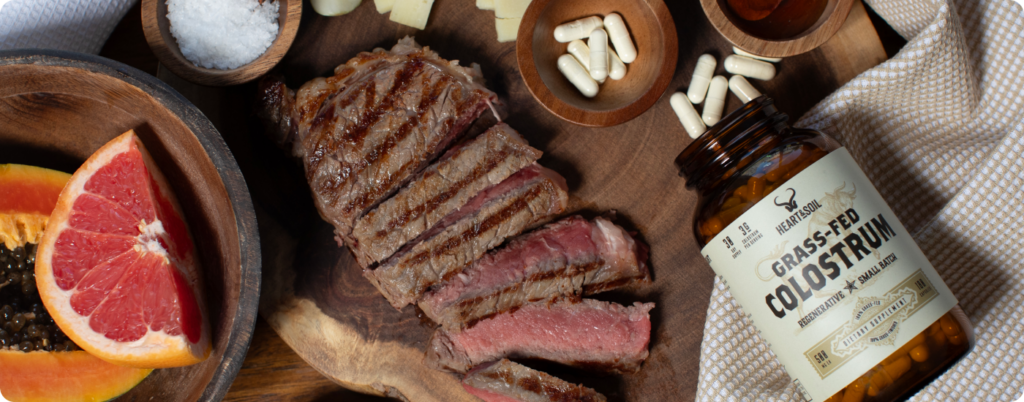
Colostrum: A Superfood That’s Stood the Test of Time
While colostrum has been used for centuries, it’s surging in popularity (and for good reason). Due to its nutrient density, grass fed colostrum is a formidable tool for immune support, digestive health, vitality, and sports nutrition. These benefits can extend from infancy deep into adulthood.
A colostrum supplement may not be suitable for everyone, but the hype around it is warranted for countless people. Just read what Danielle and her daughter had to say!
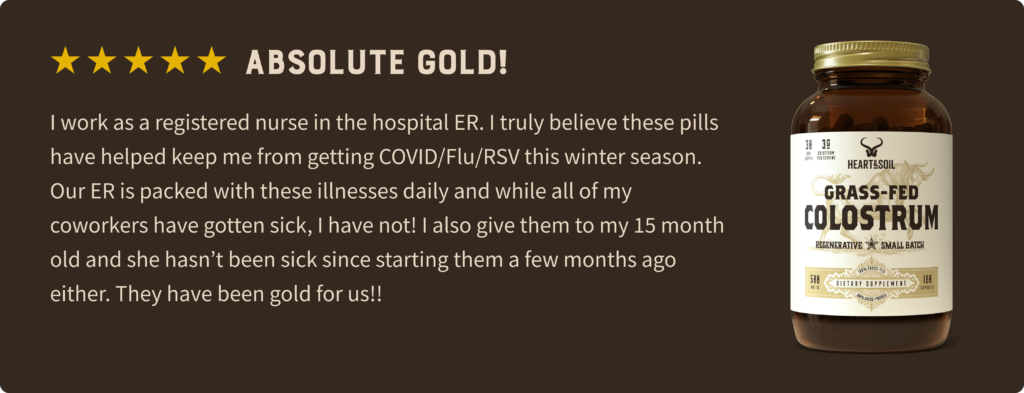
Subscribe to future articles like this: